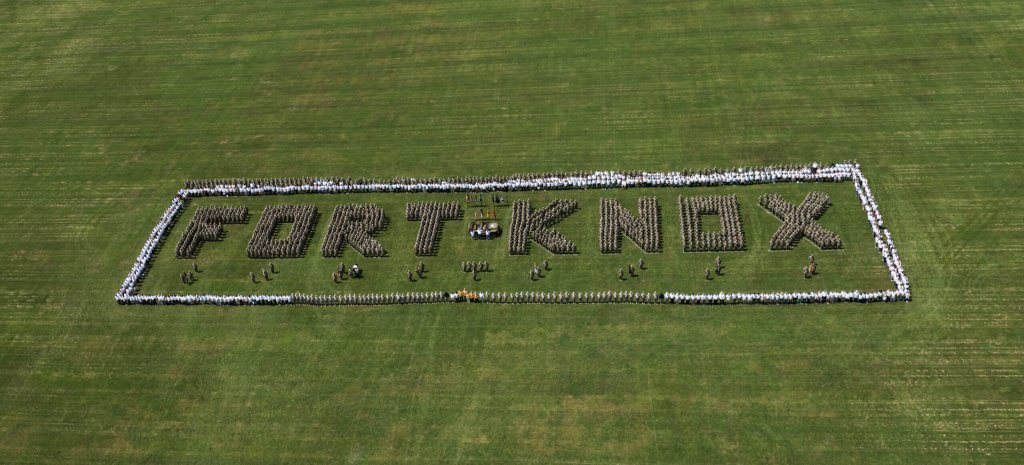If you’re visiting a loved on on a military installation or if you’ve decided to take the plunge and don a green suit yourself, you might have questions about what to expect when you head to your first installation. That’s understandable since military installations often seem shrouded in secrecy – what with the fences and the gates and all. But the truth is that a military installation isn’t that much different from any other kind of campus. Okay, there’s a little more security and probably a lot more weaponry. But that’s basically the extent of the differences. No, really!
A Note on Terminology
In the military, we call our duty stations many things. Base. Post. Garrison. Installations controlled by two branches are generally referred to by their initials since no one can figure out what to call them! Joint Base Lewis–McChord, we’re looking at you.
It’s enough to make your head spin! Most service members will know what you mean if you use the word base to mean post although you might get made fun of (rightfully so). And even within the branches themselves, these words are often interchangeable. But for clarity’s sake (and to look like you know what you’re talking about when you visit!), let’s define the terms for US-based installations.
Use the term “base” to talk about Air Force and Navy installations. Unless it’s an Air Station, in which you’d want to use Naval Air Station. Or if it’s a ship.
Marines call their installations Camp. But sometimes they refer to them as bases, too. Oh, and don’t forget Marine Corps Air Stations (which are different than Naval Air Stations)!

The Army is pretty basic. Use the term “post” to talk about Army installations. Unless it’s a Fort. Or an Army Air Field.
Now that we have that cleared up, let’s talk about what you can expect from Minute One when you arrive at your installation.
Security
Miles of secure fence lines and military police surround every U.S. military base. This is also true for OCONUS installations, but sometimes they’re guarded by local nationals. No matter where you are in the world, to enter an installation, you must pass through a front gate with the proper identification. Civilians are generally not allowed without proper access. Some areas of the base have even more security to pass through before you are permitted entry. Security Forces provide special protection for all the weapons, property, and personnel on base. They have buildings near the access points and throughout the installation, such as near weapons ranges and training facilities.
Military Buildings
In order to make everything run smoothly, every base has the same types of buildings. Some are for military operations, including administrative, intelligence, security, research, and training facilities. Others are for storage, like weapons, ammunition, and supplies. Then there are the buildings to support the day-to-day life of personnel. These include barracks and other housing, the mess hall, recreational facilities, maintenance, commissary facilities, medical facilities, canteens, restaurants, a chapel, and more.
Military Flightlines

Remember when we were talking about Army Air Fields and Naval Air Stations? Well, here’s when knowing those terms comes in handy. A military runway is also called a Flightline. Flightlines have advanced security to protect expensive aircraft and equipment from attacks, theft, and any other threat. The Flightline is among the most heavily guarded areas of a military installation. Surrounding the Flightline, numerous warning signs mention foreign object damage (FOD). These signs indicate that personnel will use deadly force on any unauthorized entry to the area. This includes any unauthorized human or foreign object entry. One reason the Flightline is so heavily guarded is the entry of a foreign object can get sucked into an aircraft’s engine and cause serious damage. Even so-called harmless things like a soda can or small rock can be problematic.
Miscellaneous Structures
Most installations have satellite dishes connected to what they call “elephant cages.” They are used for telecommunications, sending and receiving classified and unclassified information.
Some installations have training areas for chemical, biological, and nuclear warfare. These are often uniquely designed chambers to train in identifying these threats and the proper use of related equipment, like gas masks.
These are the basic buildings you’ll find at almost every installation. They don’t account for any kind of Morale, Welfare, and Recreation (MWR) buildings that you’ll come across. Here again, each branch calls their shopping facilities something different. Army posts will have a Shoppette, which is like a civilian convenience store. Marines have these too, except they’re called Seven Day Stores. You’ll probably also find a movie theater, golf course, and bowling alley. Most installations have a library and a do-it-yourself car wash, too.
Speaking of the MWR, here are four of the best MRW hotels you didn’t know existed.


